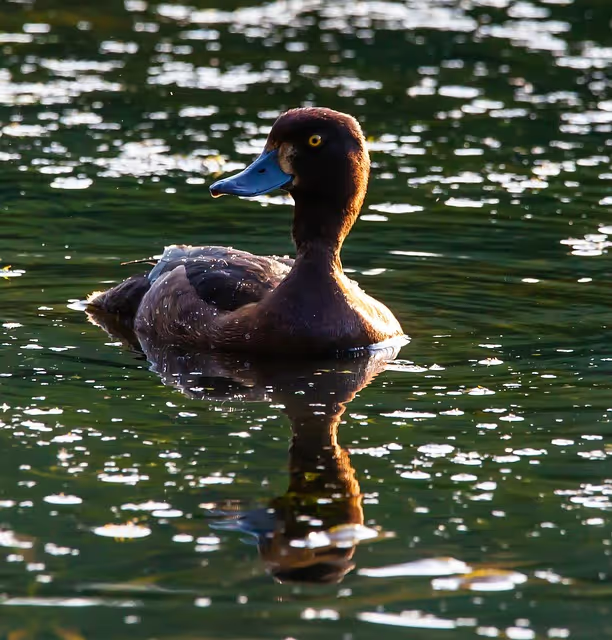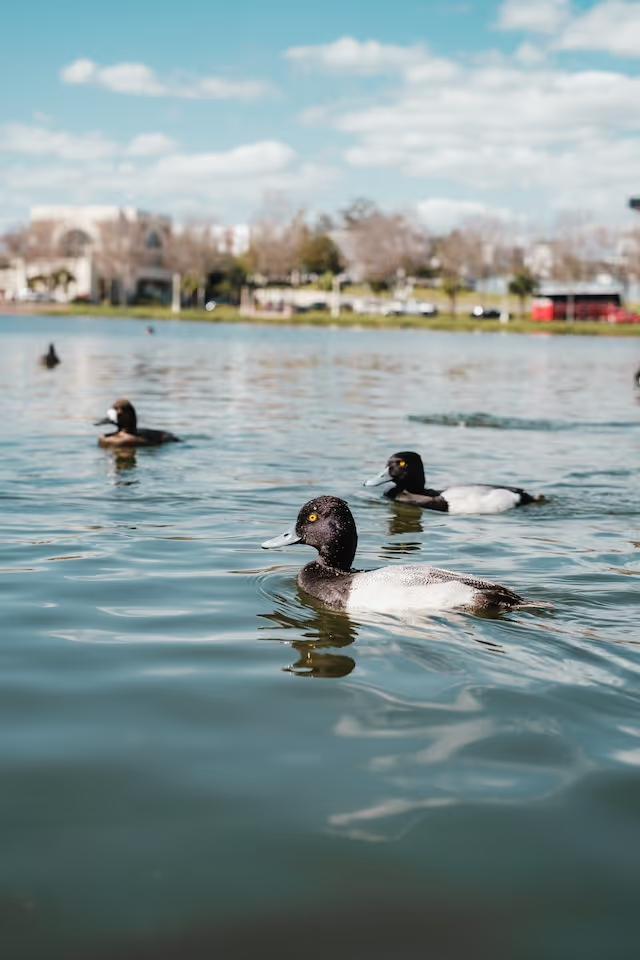The Greater Scaup


Introduction
A couple of weeks ago, a family member observed that they have been seeing more geese here in Ocean Shores, and, as a result, winter could be coming early this year. I personally haven’t noticed an uptick in the number of geese in town in recent weeks. However, the thought of winter coming early has been swirling around in my mind ever since that remark was made, if only because it has been getting warmer and more humid out here in recent weeks. As we get closer to winter, there will indeed be an increase in the number of geese in town. However, there will also be many other birds arriving that we don’t get to see in the summer months. The Greater Scaup is one of them.
Unique Characteristics and Size
Greater Scaups (scientific name: Aythya marila) are beautiful, medium-sized diving ducks with rounded heads (3). They are unique for being the only circumpolar diving duck in existence (2), which means that if you see a diving duck at one of Earth’s poles, it will always be a Greater Scaup since no other diving ducks visit Earth’s poles.
Greater Scaups are larger than crows but smaller than geese (3). Males and females both have wingspans of 28.4 to 31.1 inches (72 to 79 centimeters), weigh 25.6 to 48 ounces (726 to 1,360 grams), and are 15.3 to 22.1 inches (39 to 56 centimeters) long (3).
Colors and Patterns
Female Greater Scaups are mostly brown in color (3). The shade of brown is noticeably darker on their heads (3), and, depending on the angle you’re looking at the bird from, may appear to resemble chocolate. Females also have a white patch next to their bills. The size of the patch varies by bird (3).
Breeding males can appear to sport a black and white color scheme when viewed from a distance (3). However, when viewed more up-close, they have much more intricate patterning. Their heads sport an iridescent green sheen, whilst their backs have thin black barring (3). Their bills are bluish in the color, while their eyes are a rich shade of yellow (3). Nonbreeding males have blackish heads and mottled bodies that sport a brown and gray color scheme (3).

Range
Greater Scaups are migratory birds, which means that they don’t spend the entire year in one single location. Instead, they travel between breeding season and winter ranges. During the breeding season, Greater Scaups can be found in much of Alaska (basically everywhere but the far northern coast of the state), and areas of North western and North central Canada (1).
During the winter, Greater Scaups take up residence along both the West and East Coasts of the United States and Canada. The West Coast winter range extends from the Aleutian Islands in Alaska all the way down to roughly the San Francisco Bay Area (1). They can occasionally be seen further south along the California Coast (1).
The East Coast winter range runs from Newfoundland and Labrador down to approximately the Hampton Roads area in Virginia (1). They can occasionally be seen further south along the East Coast in the Carolinas, Georgia, and North west Florida (1). Additionally, there appear to be additional winter ranges in the southern part of Lake Michigan, all of Lake Erie, and all of Lake Ontario (1).
Habitat
Greater Scaups make their homes on lakes, rivers, estuaries, salt bays, coastal bays, bogs, and lagoons (1). They prefer semi-open country near the boreal forests of Northern Canada and Alaska, while preferring more exposed environments during the winter, such as open bays (1). This means that, when winter arrives, you may be more likely to see a Greater Scaup in the North Bay than in Duck Lake, which is less exposed to the elements. In the winter, you may see flocks of Greater Scaup that feature hundreds or even thousands of individual birds (1).
During molting season, which generally occurs in the spring, male Greater Scaup travel to large, isolated lakes that offer plenty of food and cover (2). They will return to the same lakes each year to molt. These lakes can be near the nest site (more on that in a minute) or many miles away (2).
Diet and Feeding
The Greater Scaup’s diet primary consists of plant material in the summer and mollusks in the winter. In the summer, pondweeds, sedges, grasses, and wild celery are the Greater Scaup’s favorite foods. In the winter, mussels, snails, oysters, and clams become the preferred options (1). Greater Scaups also eat crustaceans and insects (1).
Greater Scaups generally forage for their food by diving and swimming underwater. They tend to eat smaller food items underwater and will bring larger items up to the surface to consume (1). Occasionally, they might forage by dabbling or “up-ending” in shallow water (1). Feeding can occur at any time of the day or night, with the timing being influenced by tides in coastal areas (1).

Photo by Airam Dato-on: https://www.pexels.com/photo/ducks-on-body-of-water-11441829/
Courtship and Nesting
The formation of bonded pairs occurs primary in late winter and early spring. During this time, male Greater Scaups put on displays to court females (1). These displays include throwing their heads back sharply while giving soft calls, flicking their wings and tails while whistling soft notes, and “exaggerated bowing movements”, which is when they lower the tip of the bills toward the water and then raise it high towards the sky (1).
Once bonded pairs have formed, a nest site must be chosen. The site is selected by the female, who normally opts for a location that is very close to water (1). Islands, shorelines, and mats of floating vegetation are all commonly chosen nest sites. The nest is typically a shallow depression that is lined with a thick layer of down (1). The female obtains the down by plucking it from her own breast (2). The feathers can grow back in as little as a month, but may take up to a year to recover fully (4). The nest is also lined with dead plant material (1). The female is solely responsible for the construction of the nest. Loose colonies can be formed when several nests are located close to each other (1).
Eggs and the Young
Greater Scaups lay anywhere from five to eleven eggs at a time. The eggs are “olive buff” in color (1). The incubation process is handled exclusively by the female, and runs for approximately 24-28 days (1). While the incubation process is underway, the male goes away to molt (2), as we previously discussed.
Shortly after the young hatch, the female leads them to the water, where they may be joined by two or more broods of young Greater Scaups, all overseen by at least one female (1). The young are responsible for feeding themselves. They are able to fly 40-45 days after hatching (1).
Next Time
Since the bird species we talked about today is called the Greater Scaup, you might be wondering if there is a such thing as a Lesser Scaup. The answer is yes, and we’ll shine a spotlight on them in an upcoming post. We hope to see you then!
References
© Ian D. Caldwell, August 2023
Touch whale bones, examine shipwreck artifacts and connect with the coast's living history.

Support our mission, get involved in educational programs, or contribute through donations and volunteering.